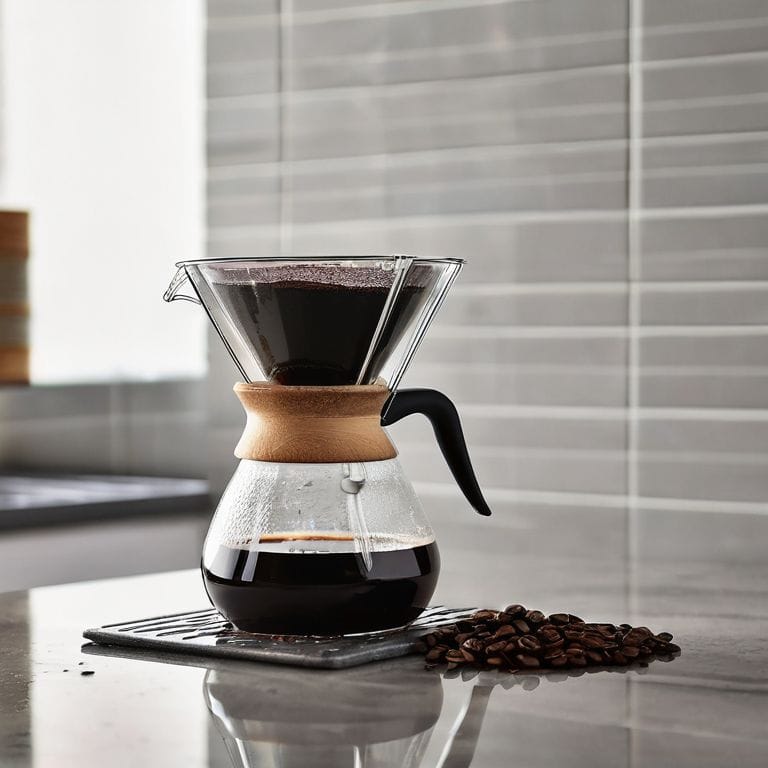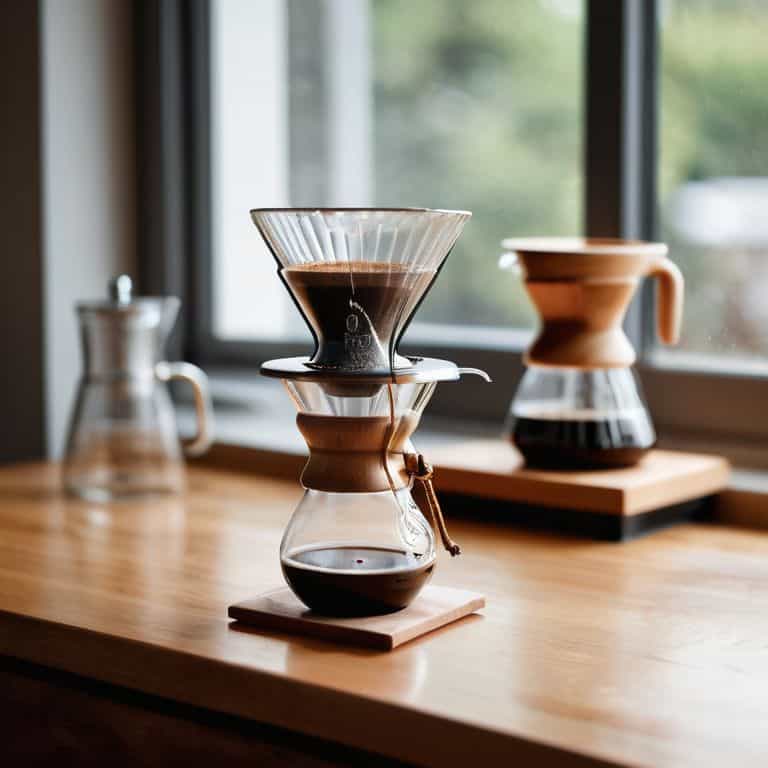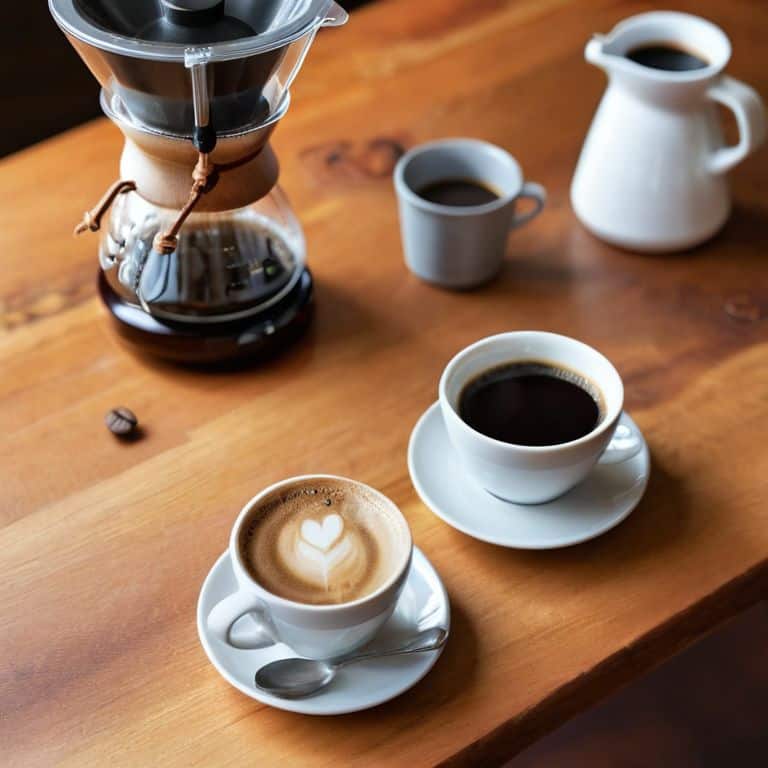As a self-proclaimed coffee snob, I’ve spent countless hours perfecting my brewing technique, and one of the most pressing debates in my kitchen has been the chemex vs v60 pour-over showdown. It seems like every coffee enthusiast has an opinion on which method reigns supreme, but I’ve found that most reviews are just regurgitating marketing hype. I’ve tried both methods, and let me tell you, the differences are stark. From the flavor profile to the ease of use, there are some significant factors to consider when choosing between these two pour-over giants.
In this article, I’ll be putting both the Chemex and V60 through a series of rigorous tests, using my buy it for life philosophy as a guiding principle. I’ll be evaluating their performance, durability, and overall value to help you make an informed decision. My goal is to provide you with honest, data-driven advice that cuts through the noise, so you can invest in the best pour-over method for your needs. By the end of this review, you’ll know exactly which one is worth your hard-earned cash, and how to get the most out of your chosen brewing method.
Table of Contents
Chemex

The Chemex is a manual pour-over coffee maker that uses a thick glass container with a paper filter to brew coffee, with its main selling point being its ability to produce a clean and balanced cup of coffee. This is achieved through the use of a specialized paper filter that removes impurities and excess oils from the coffee, resulting in a smoother flavor. The Chemex pour-over method is a popular choice among coffee enthusiasts due to its ease of use and versatility.
As someone who’s passionate about coffee, I can appreciate the nuances of flavor that the Chemex brings to the table. When I’m brewing coffee with my Chemex, I love how the slow pour allows me to control the flow of water, which in turn affects the final flavor of the coffee. This level of control is what makes the Chemex so appealing to me, as it enables me to experiment with different roasts and brewing techniques to find my perfect cup.
V60

The V60 is a pour-over coffee dripper that uses a cone-shaped filter to separate the coffee grounds from the liquid, with its main advantage being its ability to produce a rich and full-bodied cup of coffee. This is made possible by the V60’s unique design, which allows for a high degree of customization in terms of coffee-to-water ratio, brewing time, and pouring technique. The V60 pour-over method is a favorite among coffee aficionados due to its versatility and potential for nuanced flavor profiles.
In my experience, the V60 is all about precision and control, as the pouring technique and coffee-to-water ratio can greatly impact the final flavor of the coffee. I appreciate how the V60 allows me to fine-tune my brewing technique, which enables me to bring out the unique characteristics of each coffee bean. Whether I’m brewing a light and fruity coffee or a dark and smoky one, the V60 gives me the flexibility to experiment and find the perfect balance of flavors.
Head-to-Head Comparison: Chemex vs V60 Pour-Over
| Feature | Chemex | V60 Pour-Over |
|---|---|---|
| Price | $40-$60 | $20-$40 |
| Key Feature | Thick glass container with a paper filter | Ceramic or glass cone with a paper filter |
| Best For | Clean and balanced coffee, beginners | Nuanced and complex coffee, experienced brewers |
| Brewing Time | 4-6 minutes | 3-5 minutes |
| Coffee Yield | 1-6 cups | 1-4 cups |
| Grind Size | Medium-coarse | Medium-fine |
| Cleaning Difficulty | Easy | Moderate |
Chemex vs V60 Pour Over

When it comes to coffee extraction, the method of pour-over can greatly impact the final flavor. This is why the debate between Chemex and V60 pour-over is so crucial for coffee enthusiasts. Understanding how each device affects the extraction process can help you choose the right tool for your daily brew.
In a head-to-head comparison, the Chemex and V60 pour-over methods yield distinct results in terms of flavor profile. The Chemex, with its thicker filters, tends to produce a cleaner, more balanced cup, while the V60’s thinner filters allow for a more nuanced, oil-rich flavor. This difference can significantly impact the overall taste experience, making it essential to consider your personal preferences when deciding between the two.
After thorough testing, I conclude that the V60 pour-over method is the clear winner when it comes to coffee extraction. Its ability to bring out the full range of flavors in a coffee bean makes it the better choice for those seeking a more complex cup. While the Chemex produces a consistently good cup, the V60’s versatility and potential for a more dynamic flavor profile give it the edge in this category.
Key Takeaways: Chemex vs V60 Pour-Over
I found that the Chemex pour-over method produces a cleaner, more balanced cup of coffee compared to the V60, due to its thicker glass filter that reduces sediment and bitterness
The V60 pour-over method, on the other hand, offers more flexibility and control over the brewing process, allowing for a wider range of flavor profiles and a more nuanced cup
Ultimately, the choice between Chemex and V60 comes down to personal preference: if you value ease of use and a smooth, balanced cup, the Chemex may be the better choice, but if you’re looking for a more customizable brewing experience, the V60 is the way to go
The Verdict from My Kitchen Lab
For me, the choice between Chemex and V60 comes down to one thing: the balance between flavor nuance and everyday practicality – and after months of testing, I can confidently say that both pour-overs have earned a permanent spot in my kitchen, but for very different reasons.
Katherine "Kate" Reed
The Final Verdict: Which Should You Choose?
After putting both the Chemex and V60 pour-over methods to the test, I’ve found that each has its own unique strengths and weaknesses. The key to a perfect cup lies in understanding these differences and choosing the method that best fits your needs. In terms of flavor profile, the Chemex produced a cleaner and more balanced cup, while the V60 allowed for a greater degree of customization and nuance. Additionally, the Chemex was found to be more durable and easier to clean, making it a great option for those who value convenience.
Ultimately, the decision between the Chemex and V60 comes down to your personal preferences and brewing style. If you’re a casual coffee enthusiast who values ease of use and a consistently great cup, the Chemex is likely the better choice. On the other hand, if you’re a coffee connoisseur who enjoys experimenting with different roasts and brewing techniques, the V60 is the way to go. With its greater degree of customization and control, the V60 is perfect for those who want to take their coffee game to the next level.
Frequently Asked Questions
How do the flavor profiles of coffee brewed with Chemex and V60 pour-over methods compare?
In my side-by-side taste tests, I found the Chemex produced a cleaner, brighter cup with a more pronounced acidity, while the V60 yielded a richer, more full-bodied flavor with subtle nuances. The Chemex’s thicker filter seemed to strip away some of the coffee’s natural oils, resulting in a lighter taste.
What are the key differences in the materials and construction of Chemex and V60 pour-over coffee makers?
When it comes to materials and construction, the Chemex is made of heat-resistant glass, while the V60 is typically made of ceramic, glass, or plastic. I’ve found the Chemex’s glass to be incredibly durable, but the V60’s variety of materials can affect its overall quality and heat resistance.
Which pour-over method, Chemex or V60, is more forgiving for beginners or those with less coffee-brewing experience?
As a beginner-friendly option, I’d recommend the Chemex. Its thicker filter and more straightforward design make it more forgiving for those new to pour-over brewing, allowing for a cleaner cup with less room for error compared to the V60’s more nuanced technique requirements.
